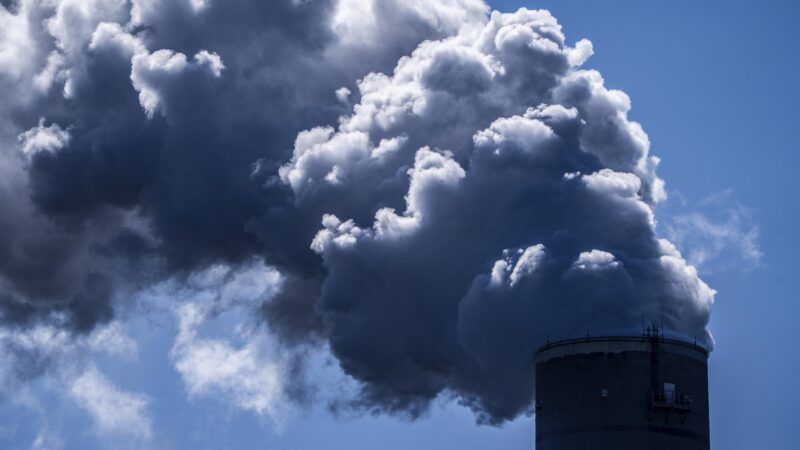Markets Don't Want More Coal. Trump Is Propping Up the Industry Anyway.
The president’s preferential treatment of fossil fuels will cost consumers.

President Donald Trump's preferential treatment toward fossil fuels has backfired and left many American energy producers anxious about the future of the industry. The president doesn't seem to care.
On Tuesday, Trump doubled down on his fossil fuel energy agenda with an executive order to bolster "America's Beautiful Clean Coal Industry." The edict labels coal as "cost effective" and "critical to meeting the rise in electricity demand" and directs federal agencies to identify and rescind federal regulations and programs that "seek to transition the Nation away from coal production and electricity generation."
Coal was once the dominant energy source in the U.S., making up more than 50 percent of the nation's electricity generation in 2005. Since then, coal use has steadily declined, and in 2023, it generated only 16 percent of America's electricity.
Coal's decline was not caused by a federal plot to transition away from coal, like Trump thinks, but rather by markets and innovation. Advancements in renewable energy technologies—which were, and continue to be, supported by subsidies—made the energy source more attractive to investors. Breakthroughs in horizontal drilling in the early 2000s brought a flood of cheap and abundant natural gas to the market. These technologies priced coal out, which lowered energy bills for consumers and significantly reduced greenhouse gas emissions in the United States.
The energy source is also not as cost-effective as the executive order claims. Coal plants are expensive to build and operate, and transportation costs can exceed the price of coal at the mine. These economic factors have informed investors and utilities not to build coal-fired power plants—the most recent large plant was built in 2013—which has made the current fleet of these power plants less efficient than other energy sources.
To be sure, some regulatory barriers, including federal air quality standards and state-level bans, have made coal less competitive. However, "it is the market that explains coal's decline better than regulations," Philip Rossetti, an energy policy analyst at the R Street Institute, tells Reason.
Perhaps the most concerning provision of the order is the one that designates coal as a critical mineral, which would give the federal government emergency powers to increase its production. In March, Trump signed an executive order invoking the Defense Production Act (DPA) to secure the supply of critical minerals, which, at the time, didn't include coal.
The DPA was passed during the Cold War and gives the executive branch broad power to influence whatever industries it deems necessary for national defense. Its use has time and again led to wasteful spending and cronyism. Under this executive order, the federal government will have unilateral authority to offer loans, create stockpiles, and facilitate offtake agreements to bolster the supply of coal, even though the market doesn't want it.
"The abuse of the Defense Production Act should be concerning to everyone," says Rossetti. "It was bad when [President Joe] Biden did it, and it's still bad when Trump does it. Americans should be making their own choices about consumption, not having bureaucrats in Washington make decisions on their behalf behind a fig leaf of national security."
Forcing a coal resurgence will be costly for consumers, and it may "force some retention or restarting of coal plants," according to Rossetti. However, it is unlikely to have a large impact on energy markets since most investors don't see a future for the energy source.
Despite this, the message from the Trump White House is clear: The president is ready to prop up his favorite energy sources even if markets don't want them.


Show Comments (122)